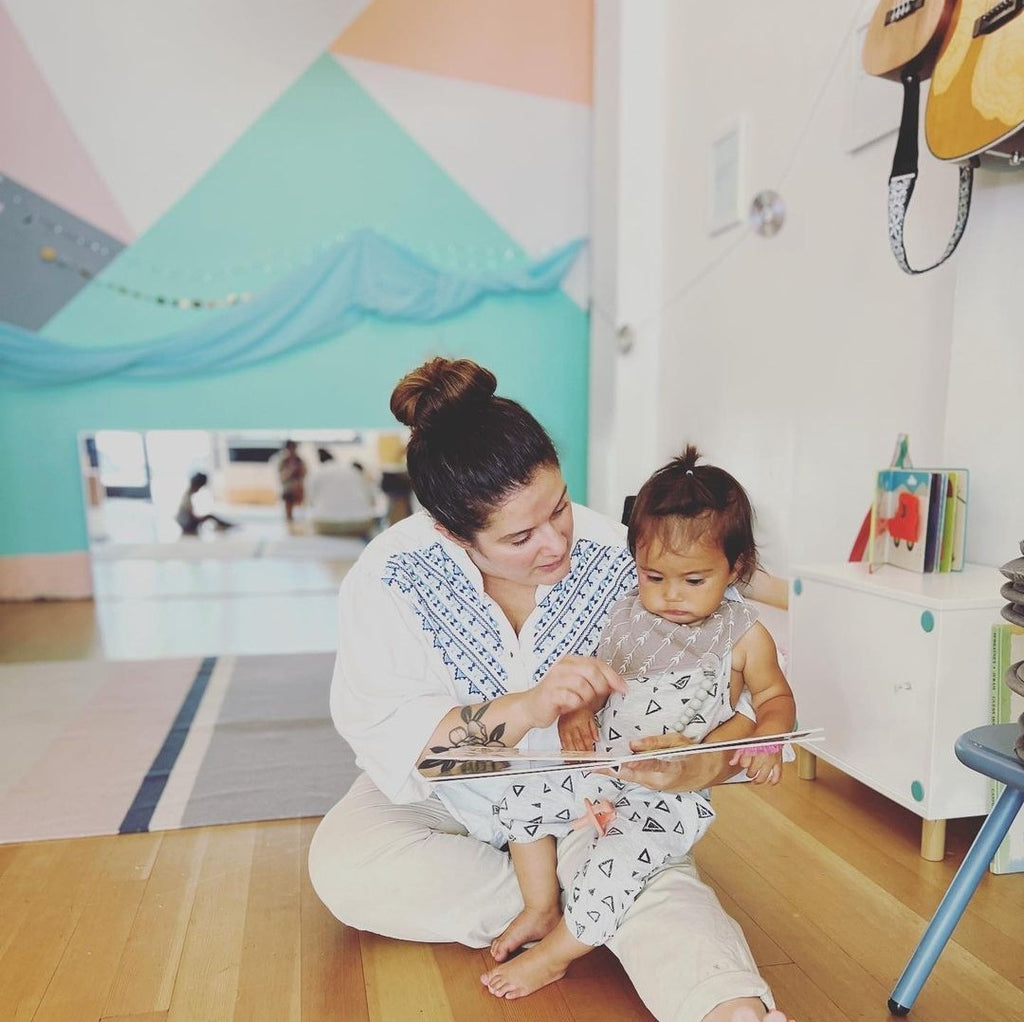Positive Guidance Strategies: Understanding and Guiding Early Years Behaviours

This week our own Jessica Schellenberg spoke with parents about the positive guidance strategies our teachers use in classes that parents can also adopt with their children. She covered a lot of ground in this question and answer format talk, but parents' concerns could be distilled into two common areas: developmentally appropriate expectations and using positive language when setting limits,
With children 18 months and younger the adult needs to be a step ahead. It's your role to be aware of the environment so your child can explore in a safe and appropriate manner. The way babies and young toddlers interact with each other and their environment will be very tactile, but if you have prepared the environment safely and are nearby the need for intervention can be minimal.
For example, two 8 month olds playing near each other will want to touch and interact. If we are nearby to observe, as long as no one is getting hurt we can allow that interaction to happen even when one baby is handling another. We may say, "gentle" and stroke an arm softly, but we can let them learn from each other. The same strategy can be used when infants this age are pulling on toys. Often no intervention is needed. They are learning how to navigate the situation and neither is very upset if the other pulls the toy away.
When we see undesirable behaviour we need to look first at the developmental level of the child. Positive guidance is looking at behaviour through the lens that the child is not being malicious or doing something to be "bad". We can look at guidance in a positive, wholistic and respectful way that will also teach a child to grow and be empowered themselves in a positive way. If discipline is reactive and negative it can stifle a child's need and ability to explore and learn.
Some examples:
A young baby throwing a shaker is too young to understand that it could hurt someone or break, so we replace the shaker with a soft ball.
An older toddler throwing a shaker can be told that it must be held gently to take care of it and keep it safe. If they continue to throw it because that impulse is too strong to control then we put it away and replace it with a soft ball for them too. We tell them that this is a safe ball to throw. We meet them where they are in that moment.
We can frame the guidance positively without allowing the shaker to be thrown.
Directions vs requests is also an important distinction. If you need to leave a space where your child is enjoying themselves. "It's almost time to go now." is different from "Do you want to go now?" It's confusing and unfair to offer a choice when a choice is inappropriate. If you make a mistake that's ok too, you can just apologize and reframe. "I'm sorry. I made a mistake. It's time to go." or soften with "It will be time to go in two minutes."
When parents ask us about "tantrums" we steer away from this perspective and towards seeing crying, screaming, etc. as a child articulating a very real need. The first step is always knowing the child, understanding what they might be going through. It's important to know how the child's day is going; are they hungry, tired, overstimulated, needing comfort and attention, needing to have their frustration understood? "I can see you're very tired and frustrated right now. How can I help?"
In moments of frustration for you and/or your child, first articulate what you feel, then what you see.
"I feel _____ because I see you're not listening to me right now." Consistency with this strategy and language shifts from a perspective of accusations, blame, guilt and victimizing that can really negatively impact a relationship and shows our children that we are respecting them and their feelings even while having an expectation of certain behaviour.
If you are able to view your child as someone who is always learning and exploring and looking at them holistically it is easier to be patient and respectful around limits. You can practice from an age when they are maybe too young to understand, but will be preparing both of you for when they are old enough. "It's almost nap time. It's time to put the blocks away." Again, don't ask or frame it as a question when it's inappropriate to give a choice. Preparing them for what's to come is key to making transitions easier. "We can play for two more minutes before it will be time to clean up."
Framing limits positively will quickly become a habit. Instead of, "Don't be so rough with the books." try "Let's turn the pages together gently."
Food being thrown is a common issue with young toddlers. By around 12-14 months children are old enough to understand simple clear statements and logical consequences. "It looks like you're not hungry anymore. I'll move that away for you." If they get upset. "Oh, are you still hungry? We can try again."
Sharing becomes an issue for many parents of older toddlers, as struggling to negotiate over a toy is one of the primary ways children might come into contact with each other in a shared environment. In our classes, we focus on turn taking and away from sharing as turn taking is a more concrete concept for young children to understand. Phrases like, "It's their turn." "They're not finished yet." "What would you like to do while you wait for your turn?" "I'm not finished yet." are simple and will help a child be ready to verbalize their needs when they are old enough. We are setting expectations of behaviour within a positive framework.
Even though we are modelling positive ways of making our needs known we cannot expect children to "Use their words" when they are upset. This is something to be practiced in calm moments, not in moments of dysregulation. When pushing or other unwanted behaviour happens we may need to briefly remove the child to a different space to help them calm down and regulate themselves through connection with us. To learn more about how a child's brain is working during moments of extreme upset and dysregulation you can read this post.
When you are the one feeling frustrated it's helpful to just check in with yourself for a moment. Check your tone, body language. How are you feeling? What is it that you worried about right now? your image? winning this battle? Take a deep breath and be mindful about what the situation is really about.
Another topic that came up was praising your child. How much is appropriate and how much is too much. We all want our child to feel good about themselves and it feels like praise will bolster their self esteem. However, praising every little thing they do makes that praise fairly meaningless and also something they come to depend on in order to feel worthy or confident. Instead, go back to saying what you see in a specific way. "I notice you're using a lot of blue today." rather than, "That's such a beautiful painting!" One denotes interest and one places value. What happens when you're not there to approve of the painting? When you do offer praise, praise effort not outcome. "I saw you working really hard on that tower." rather than "That's the best tower I've ever seen!"
These strategies may be very different from the ways you were parented. Parents often have to negotiate guidance strategies with partners and grandparents who have had different experiences and backgrounds. The type of relationship you have will determine how you might go about this. You may be able to state what you are comfortable or not comfortable with, but your best influence will be modelling these strategies with your child for them.
Contributed by Shauna Farrell
